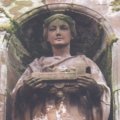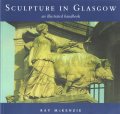 |
|
| Newsletter No.2 | 25 February, 2002 |
|
Welcome to our February Newsletter:
|
|
Time flies. Here we are again with another Newsletter. This last month has been very successful for us, with many new visitors. Keep promoting us amongst your friends. Also a big welcome to a new group of readers who have subscribed with us direct from Randy Jewart's newsletter, of www.sculpture.org.
| You'll see that we have added a few more photo-galleries and mini-biographies this month, but there are still a few dozen biographies to catch up on, not to mention the hundreds of photographs that still have to be made up into galleries. Keep checking the website and the Newsletter will keep you updated.
Thanks again for visiting us and do send us an email if you would like to comment on our website or if you have anything to add to our research. And please don't forget to let all your friends know. See you on the website! Tim Gardner
| top |
|
New photo galleries during February:
|
 Charing Cross Mansions (1889-91). The first red sandstone tenement in the city. Included in the design was a grande horloge at the centre of the façade surrounded by sculpture inspired by Michaelangelo.
Charing Cross Mansions (1889-91). The first red sandstone tenement in the city. Included in the design was a grande horloge at the centre of the façade surrounded by sculpture inspired by Michaelangelo.
The sculptor was William Birnie Rhind (1853-1933).
| top |
 Christ Feeding The Multitude (1885). St George's in the Fields Parish Church is something of a rarity amongst the city's classical buildings, its colossal tympanum crowded with figurative sculpture. It is also Glasgow's finest tympanum group.
Christ Feeding The Multitude (1885). St George's in the Fields Parish Church is something of a rarity amongst the city's classical buildings, its colossal tympanum crowded with figurative sculpture. It is also Glasgow's finest tympanum group.
The sculptor was William Birnie Rhind (1853-1933).
| top |
 Stewart Memorial Fountain (1872). Devised as an Imperial Scottish Crown, the fountain commemorates Lord Provost Robert Stewart (1811-66) and his greatest contribution to the city and its health, the Loch Katrine Water Scheme.
Stewart Memorial Fountain (1872). Devised as an Imperial Scottish Crown, the fountain commemorates Lord Provost Robert Stewart (1811-66) and his greatest contribution to the city and its health, the Loch Katrine Water Scheme.
The sculptor was John Mossman (1817-90).
| top |
 Springburn Public Halls (1902). The gift of Sir High Reid, of the Hyde Park Locomotive Works and a great benefactor to Springburn, Whitie's Renaissance design won a competition in 1899, and was exhibited at the RGIFA.
Springburn Public Halls (1902). The gift of Sir High Reid, of the Hyde Park Locomotive Works and a great benefactor to Springburn, Whitie's Renaissance design won a competition in 1899, and was exhibited at the RGIFA.
The sculptor was James Milne Sherriff (fl. 1890-1904).
| top |
| The following have been updated with a new text commentary: | |
|
New biographies during February:
|
| This month we have added several "mini biographies" which are listed below in alphabetical order: | top |
| Anderson & Co (fl 1872). Firm of munoumental sculptors. | top |
| Anderson & MacKenzie (fl.1870-72). Firm of munoumental sculptors. | top |
| Hugh Barclay (fl. 1846-?). Firm of munoumental sculptors. | top |
| Bowman & Barclay (fl. 1846-7). Firm of munoumental sculptors. | top |
| Andrew Brockett (fl. c. 1803- 32). A Glasgow based mason and builder. | top |
| Paul Zunterstein (1921-68). Austrian born sculptor in wood, terracotta and concrete. | top |
|
Recommend us to a friend:
|
| Please forward this newsletter on to any of your friends or colleagues who you feel may be even remotely interested in Glasgow or Sculpture. Even if they aren't now, I'm sure they soon will be. | top |
|
Glasgow News:
|
 The Kelvingrove Museum and Art Gallery (1901) is to get a £25m refit. This has been made possible by the awarding of a £12.7m grant from the Heritage Lottery Fund. The museum was one of the first public buildings to be wired for electricity and rewiring will be a top priority. Also more space will be reclaimed by moving items in store to a new £7m storage facility at Nitshill and removing the workshops and offices now taking up valuable exhibition space. That will allow the basement to be turned into a new climate-controlled temporary exhibition space, a new café and three education centres. Unfortunately, this will entail closing the museum for up to two years but it should mean 50% more exhibits on display and an extra 250,000 visitors per year on top of the more than a million visitors it now attracts annually - when the museum re-opens in 2006. One distinctinctive feature, however, that will remain missing is the three bronze angels which originally surmounted the main entrance and the two front towers.
The Kelvingrove Museum and Art Gallery (1901) is to get a £25m refit. This has been made possible by the awarding of a £12.7m grant from the Heritage Lottery Fund. The museum was one of the first public buildings to be wired for electricity and rewiring will be a top priority. Also more space will be reclaimed by moving items in store to a new £7m storage facility at Nitshill and removing the workshops and offices now taking up valuable exhibition space. That will allow the basement to be turned into a new climate-controlled temporary exhibition space, a new café and three education centres. Unfortunately, this will entail closing the museum for up to two years but it should mean 50% more exhibits on display and an extra 250,000 visitors per year on top of the more than a million visitors it now attracts annually - when the museum re-opens in 2006. One distinctinctive feature, however, that will remain missing is the three bronze angels which originally surmounted the main entrance and the two front towers.
Source: The Sunday Herald, 27 January, 2002. | top |
|
Inside Story:
Springburn Public Halls.
......read more. Author: Gary Nisbet | top |
|
Book Choice:
|
|
Sculpture in Glasgow, an illustrated handbook.
Published by The Foulis Archive Press with Neil Baxter Associates.
Buy this book from... This title is not available from... | top |
|
Don't forget to use the [F11] key:
|
|
When browsing our website you may find that you need more room to view the photo-galleries. That is where the [F11] key comes in. Press this key and you will get a full screen with just a narrow tool-bar at the top. If you liked that then right-click on the narrow tool-bar and select Auto-Hide. This will hide the tool-bar itself whenever you are not using it. Just slide the mouse-pointer towards the top of the screen and it will appear again.
Unfortunately, this only works for MS Internet Explorer browsers. | top |
|
Unsubscribe or change email address.
Also for friends to confirm their subscription:
|
|
If you are one of the lucky ones that have been sent a complimentary copy of this Newsletter from one of your friends, please send a blank email to confirm and your subscription will be continued (just click on the underlined email address). No need to type anything. We will get your email address automatically.
If you wish to change the email address we send your Newsletter to, then please send an email to changeaddress, not forgetting to put your new address in the message field (just click on the underlined email address). If you would like to cancel your subscription completely, please send a blank email to cancel (just click on the underlined email address). In any case please be assured that we never pass on email addresses to any third party for any reason whatsoever. If you cancel an email address with us, then that address will be permanently removed from all our files. | top |
|
Contact us.
|
|
Email for general enquiries and information.
Email Tim Gardner, the editor and webmaster. Email Gary Nisbet, the historian. | top |
| Copyright 2002 scot-it.com | top |
 This last week has seen some really bad weather. Sudden snowstorms and icy winds, but not as bad as the storms which swept the UK a few weeks ago. This is a picture of the Kelvingrove Art Gallery and Museum (1901) in its winter coat.
This last week has seen some really bad weather. Sudden snowstorms and icy winds, but not as bad as the storms which swept the UK a few weeks ago. This is a picture of the Kelvingrove Art Gallery and Museum (1901) in its winter coat.
 One of the most impressive buildings outwith Glasgow's monumental city centre, Springburn Public Halls was gifted to the people of Springburn by Hugh Reid, the owner of the Hyde Park Locomotive Works in 1899-1902, as a cultural amenity in this once great centre of industry and railway engineering. It is, lamentably, now a derelict, rotting, endangered hulk. A situation which would shame any city that claims to be a cultural centre, and not least, one which so recently spent millions of public pounds in convincing itself and others that it was entitled to be called UK City of Architecture and Design 1999!
One of the most impressive buildings outwith Glasgow's monumental city centre, Springburn Public Halls was gifted to the people of Springburn by Hugh Reid, the owner of the Hyde Park Locomotive Works in 1899-1902, as a cultural amenity in this once great centre of industry and railway engineering. It is, lamentably, now a derelict, rotting, endangered hulk. A situation which would shame any city that claims to be a cultural centre, and not least, one which so recently spent millions of public pounds in convincing itself and others that it was entitled to be called UK City of Architecture and Design 1999!
 One of the tragedies about the building is the condition of its fine sculpture by James Milne Sherriff. One of his few documented commissions, his statues of Locomotive Building and Engineering recall the district's former principal industries and its contribution to Glasgow's role as the 'Workshop of the British Empire' (of which there are now too few visible reminders in Springburn), and both are now decaying rapidly.
One of the tragedies about the building is the condition of its fine sculpture by James Milne Sherriff. One of his few documented commissions, his statues of Locomotive Building and Engineering recall the district's former principal industries and its contribution to Glasgow's role as the 'Workshop of the British Empire' (of which there are now too few visible reminders in Springburn), and both are now decaying rapidly.
 This book explores an aspect of Glasgow's fabric which, until now, has
been largely ignored - the wealth of sculptural work that enlivens its
streets and buildings. Beautifully illustrated, with colour photographs
throughout, and incorporating extensive original research, it reveals, for
the first time, the astounding scope and quality of the City's sculptural
heritage. It is a celebration of over four centuries of achievement, and
a journey through the city as it has never been seen before.
This book explores an aspect of Glasgow's fabric which, until now, has
been largely ignored - the wealth of sculptural work that enlivens its
streets and buildings. Beautifully illustrated, with colour photographs
throughout, and incorporating extensive original research, it reveals, for
the first time, the astounding scope and quality of the City's sculptural
heritage. It is a celebration of over four centuries of achievement, and
a journey through the city as it has never been seen before.
